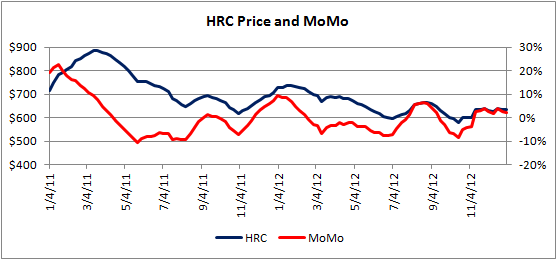Product
January 11, 2013
SMU MoMo at Zero
Written by Brett Linton
Written by: Brett Linton
Utilizing a trailing average hot rolled coil (HRC) price, the SMU Price MoMo Index for flat rolled steel in the U.S. fell to exactly 0 percent this week after eight consecutive weeks of positive momentum readings.
MoMo is based upon the current hot rolled coil price weighed against the previous 12 week average spot price as recorded by Steel Market Update. MoMo, as we like to call it so as to not confuse it with our SMU Price Momentum Indicator, was measured at 0.00 percent this week. MoMo decreased 2.21 percent over last week’s measurement of 2.21 percent. The graph below demonstrates the relationship between hot rolled coil and the momentum in pricing.
The SMU MoMo meter – now neutral– serves as a lagging indicator demonstrating the historical price momentum trend.








